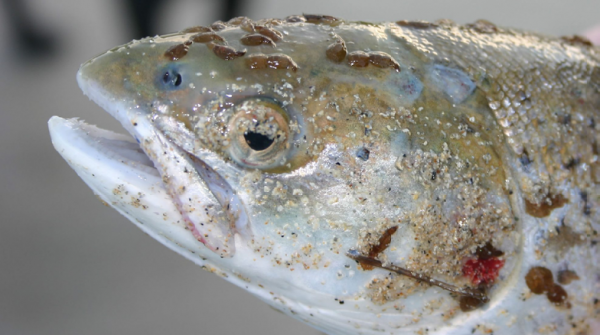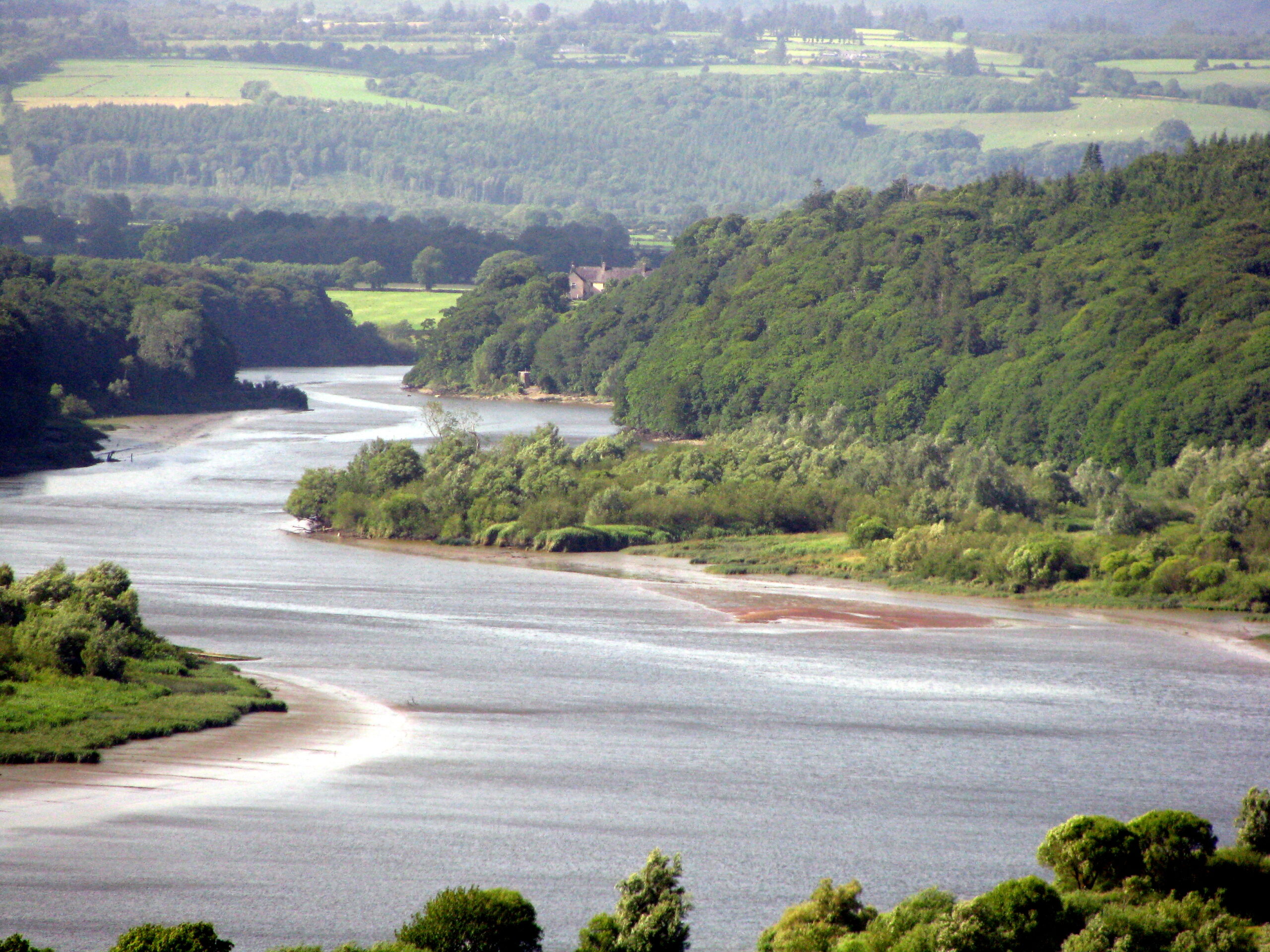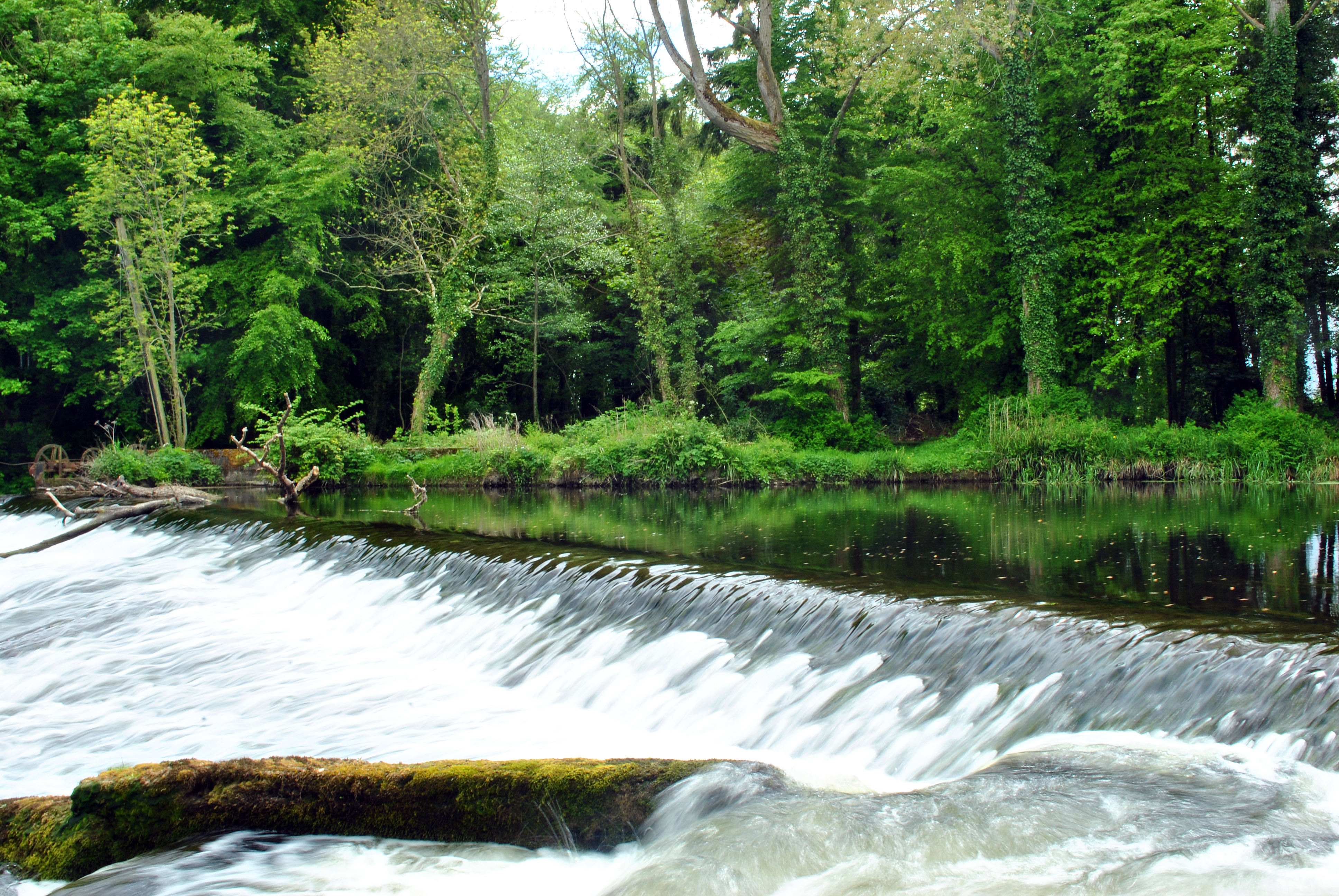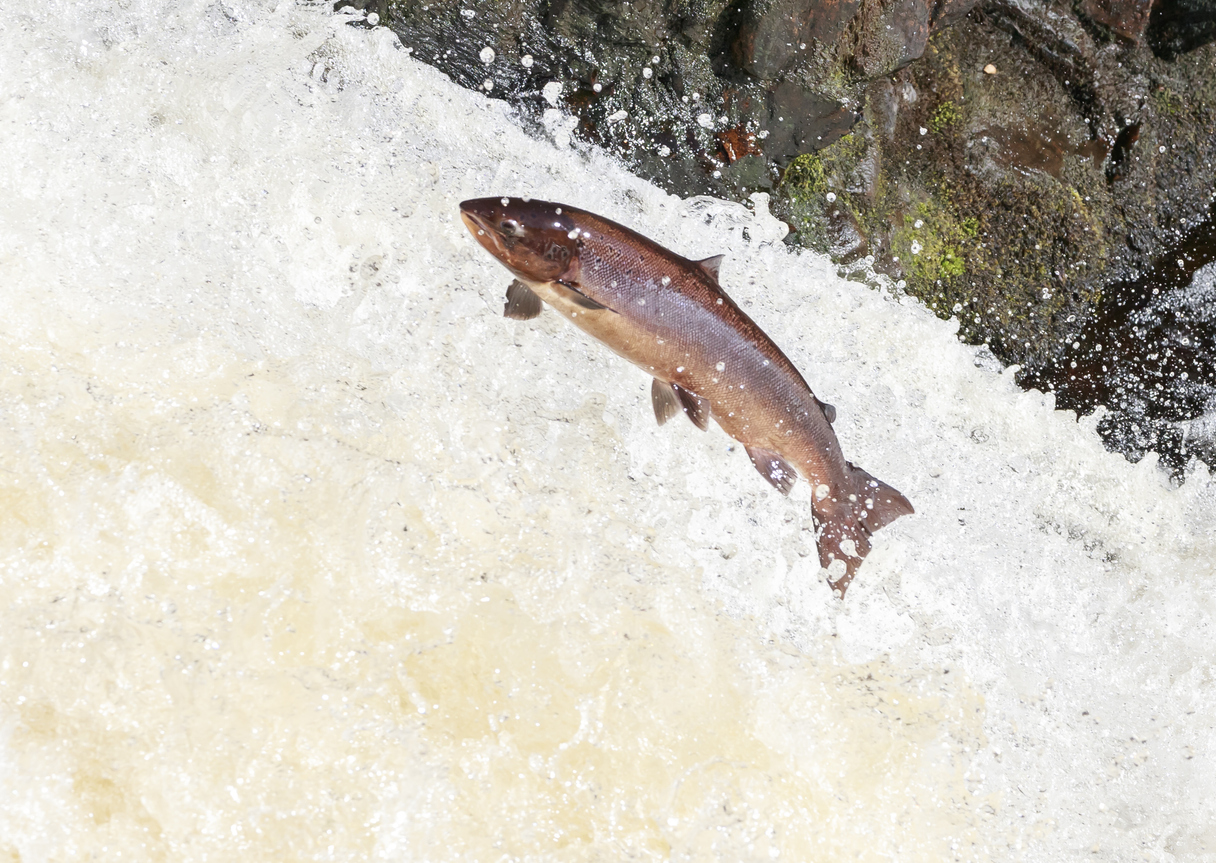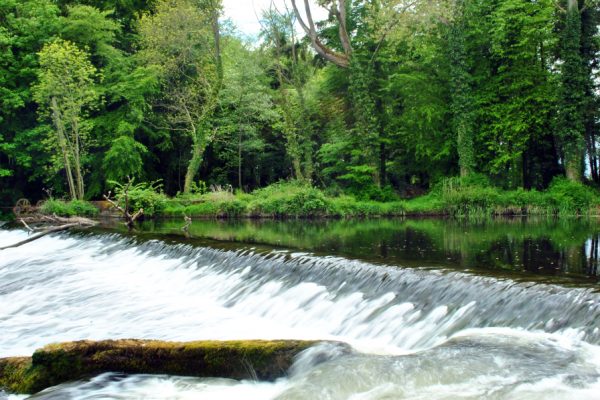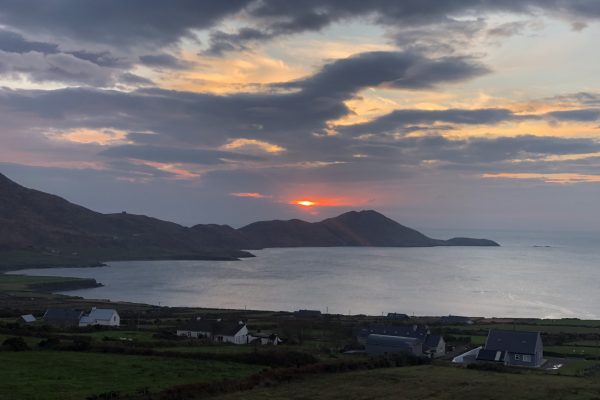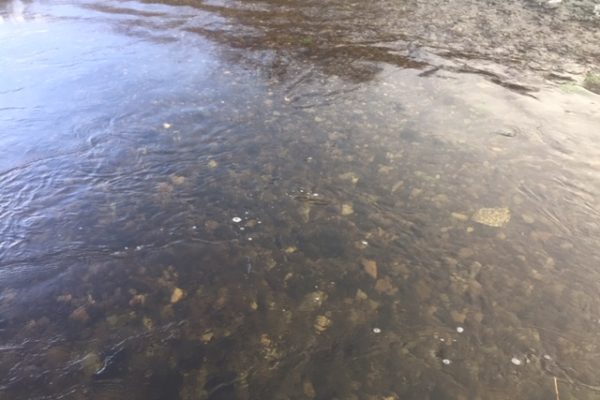This article encompasses many aspects which Salmon Watch Ireland agree with especially the management of riparian zones. It is an interesting submission which should help to garner an understanding of the many issues prevalent in Ireland regarding the ecosystem management of our river systems. It is interesting to note that management is almost non existent on all our river systems. While ownership of fishery rights are by and large fragmented there is an onus on all interested parties to work together to put in place a professional fishery and ecosystem management system especially on our rivers which produce the majority of smolts. We would also suggest that barriers should be improved to allow easier migration but also agree that large deep water sections may be appropriate in certain rivers. A changing climate scenario is fast approaching and our rivers need sympathetic and ecosystem friendly approaches to improve or indeed protect salmonid productivity. This is a very thought provoking article and the author should be congratulated for his long time unique interest and activism in conservation matters.
Save our Salmon
and
Save ourselves
One man’s view of how we can deal with a large number of our most pressing ecological and climate action issues, and at the same time totally rescue our most iconic species, the Wild Atlantic Salmon.
Our salmon are suffering from three major problems. The tunnelling over of the small streams and rivers where they used to spawn and be reared. The eutrophication of our streams, rivers and estuaries with phosphate and nitrate run off and lastly and most importantly the horror story of the fish farming industry. This opinion piece explains these issues in the light of the author’s lifetime experience and shows how all can be rectified as part of our Climate Action response.
--------------------------------------------------------------------------------------------------------------------
My name is Nicholas Grubb. I spent the first sixty years of my life at Castle Grace, a mill site on the river Tar, a tributary of the Suir. I started fishing with a bamboo and worm when I was five, soon being seized by the arm by the local fisheries board bailiff, for hauling out Parr in our mill headrace, where they congregated in vast shoals each Summer. I then went on to be a dedicated angler, coming under the tutelage of my grandfather and after that the late Peter Butler, of Ballyknockane, probably one of the most skilled killers of fish and fowl, ever to inhabit this country. Since then, I have been at Dromana, downstream from Cappoquin on the Munster Blackwater, where my wife Barbara’s family, the Villiers-Stuarts go back to 1215. The vast estate is long gone, but not a large part of the commercial fishing rights in the estuary, now hardly worth fishing. Dromana is also home to all the records of the old Lismore Board of Conservators, of which Barbara’s father James was for so many years chairman, before amalgamation into Clonmel. So where has all this gone wrong and what needs doing about it. To answering these questions, I have now become totally committed.
THE DARKNESS

A shaded stream with little prospect of optimum production of salmonids
It just so happens, that my life span to date has covered exactly the decline and near obliteration of our iconic wild salmon. It dismays me when some think this only happened at some later stage. It didn’t. It started in the mid fifties, with two massively significant ecological changes, rural electrification and the myxomatosis of the rabbit. Let me explain. For a trout and salmon population to thrive, we must have light. This is because so much depends on light, allowing the keystone aquatic plant species, the Ranunculus / crowfoot to thrive. Thus, it is imperative that all stream and river waters, less than a meter in depth, are at least 66% open to sunlight. Find a good plant of Ranunculus and drag it upside down, over your knee. You will find it is teeming with invertebrate and other life, and it is this that sustains the fish and bird populations. In the millennia past, within the salmonids range, such shallow reaches were kept open by the keystone mammalian species, the Beaver. This is why there is such move to get these re-established again, but not so here in Ireland say the stick in the mud eco purists, though interestingly we do have the Scottish Blue Hare, some going white in my orchards back in the big 2011 freeze up. In Ireland though, we had another species which did the job. The human. Now if we go back and look at pre-WW2 photos, we see the countryside nearly bereft of trees. With 40 million, rabbits what else.

A west coast spawning river - Intact vegetated riparian zone with ranunculus and optimum spawning and production.
Teagasc scientist Michael Conry in his book “The Rabbit Industry of Ireland,” explains how we were producing, mostly for export, approximately 20 million rabbit carcases a year. Tipperary Products, Castle Grace, O’Connor’s of Cappoquin, Carrs of Curraglass, were just three of the many operators down South. However, literally overnight, 99% of the rabbits were dead and the great growth of the rural tree began. Meanwhile back on the river and stream banks, there was a protocol that the landless who lived often in semi detached cottages with half an acre outside every village and small town, could harvest the stream and river side trees for firing. This they did on the summer evenings, cutting suitable thicknesses of Alder and Willow, into eight feet lengths, with their bow saws. These were then carried home and stood to dry against a gable end, to be in due course cut in into “sticks” for firing. However, back we go to rural electrification, again in the mid-fifties. Suddenly it became completely unfashionable for any rural woman of the house to be seen cooking on the fire. She soon had an electric cooker on the “never never” from the local ESB shop, and within a few years a woman called Monica Sheridan was on Telefis Eireann, showing her how to use it in black and white. Soon we had no rabbit pressure on the saplings and no two-legged beaver pressure on the streams. What a change.
Amazingly, we were all very slow to cop on to what was happening. In our case on the river Tar, we began to notice more and more of the shallow parts of the river to be bereft of Ranunculus. This we put down to the mass use of 245T herbicide (Vietnam war Agent Orange) “up in the forestry”. It was quite some time before we began to realise that the reason the Ranunculus was declining, was actually because of shading. So, we have now arrived at a situation where 90% of our streams where our trout and salmon used to spawn, in the big Southern river systems, are merely sterile, eutrophied tunnels and we wonder why we have no fish. I have actually proven all this process on our near one-kilometre-long turbine tailrace at Castle Grace. Dug out and widened in a big upgrade in 1990, it was initially just a shallow channel of slow-moving yellow sand and leaf detritus. Within a couple of years, the Ranunculus was coming back, accompanied by a massive population of trout, moorhens, duck and all the rest. This got so dense, in order to maintain the operating head, we got the silage contractor with his loading shovel to drive up and down the length of it in June each year. Soon the 45-degree bare banks started to become colonised by Willow and Alder and low and behold, where this was quickest to establish, there was less and less Ranunculus in the millrace below. I then filled in the gaps with willow cuttings and within five years had achieved a completely shaded out tunnel, bereft of any aquatic life. This is the exact state of any stream one now sees on one’s travels around the country. And we apparently want to make it worse with some crazy new riverbank planting scheme.!!!!!!
It is not of course just the invertebrate life we are missing. The Ranunculus has an amazing root system, which incorporates all the fine muds and silts, leaving clean runs of gravel between, which is where the trout and salmon spawn. Now all these muds, silts, sands etc. migrate downstream, soon causing flooding issues in the lower reaches. All so unnecessary.
Now despite all these adversities, we do still produce some smolt each year. Perched on our rock, overlooking the river Blackwater tideway, we know exactly when they are coming down in the Spring, by observing the “hunting party” activity of the Cormorants. Surely, we must kill these horrors. No! We will deal with that shortly. Actually sad to say this activity has dwindled greatly in the past few years as smolt numbers dwindle and this year 2022 has been virtually zero.
IN THE OCEANS
So, let us now take a trip out to the oceans to see the other half of the story.
The first thing that went wrong out here, was the advent of the use of the monofilament nets in the early sixties by the Greenlanders and the long liners at the Faeroes etc... soon to decimate the multi sea Winter and grilse stock. It was however not just the catching of these that did the damage, but the ones that got away, with ripped lips and dorsal fins. Never before subjected to such physical damage, these wounded escapees were soon to be decimated by UDN infection, it taking five or ten years for them to build up sufficient resistance to this assault. Then of course we had the rampant use of monofilament off our own shores, with local politicians falling over each other to hand out new licences, in an ignorant splurge of over exploitation.
THE SEA CAGES
Then came the real horror story. The advent of the sea cages. Wonderful, “won’t they take the pressure off the wild stock.” We know all about the lice and local pollution issues soon associated with this industry, the immediate wipe out of the great sea trout fisheries, but the mega horror of it, has been the systematic raping and plundering of the marine littorals Worldwide to supply the feeding of them, the tilapia, shrimp and all the rest. This now amounts two hundred million tonnes a year and is responsible for the wholesale destruction of what were sustainable marine ecosystems and local human enterprise. Mentioned above the Cormorants. Why did the cormorants suddenly start coming up the rivers in flocks of hundreds? The answer of course is their traditional feed the sprat and the like, were being sieved and plundered. “Oh, but it’s not them, it’s the big mackerel, who are eating all the smolt.” Of course, when the sprat which they previously fed on, have been robbed away from them, they’ll go for the next best thing. Likewise, we have the damage done to the large marine predators, who in their normal niche, kept the lesser ones like the seals in check.
LET THERE BE LIGHT
Now I am afraid I have a major aversion to Virtue Signallers. They are those who whine on, this is wrong, that is wrong, and on and on, without a notion of what actually to do about it all. So, what should be done about all of this.
Firstly, let’s look at our streams and rivers. For these we need a system of cyclical harvesting of the over cover. Not all at once of course. Cut some, lay some, leave some, on probably an eight-year cycle. The trees and large bushes, are snipped off using industrial secateurs on the arm of a standard trackscavator. This has already been demonstrated by IFI and my Castle Grace neighbour, hedging contractor, Tom Moloney and can been see on Youtube “Tree Shears on Aherlow River” https://www.youtube.com/watch?v=v40PGLVoq4g&t=18s
I actually made this suggestion of “cut some, lay some, leave some, at a SWIRL (Salmon Watch Ireland) meeting held in Kilkenny, about twelve or fifteen years ago, and was laughed out of it.
COMBINED HEAT AND POWER
The cut material is then bundled by the likes of a John Deere of Finland, bundling machine and transported to the nearest Combined Heat and Power plant, which needs to be community owned, in each local town. All of course competing with each other. Not some new version of the beef cartel, like happened with the Miscanthus and Willow, where the “well got” contract holders took all the profit, until their greed smothered the whole enterprise. Let alone our 30,000 kms of over covered streams. we also have our 300,000 kms of hedgerow, needing the same treatment. Not simply hammered to the scut on an annual basis, so no flower or berry is ever formed, says I, once a 45 hive, beekeeper. Then we have the forest wastes, invasives and timber industry processing wastes, all combining to give us potentially about 5% vital base load power. It is here that the farm subsidies need to be paid, not on the totally unsustainable road we have chosen to go with the likes of our dairy industry, where with the quotas removed , so many herds have gone from 80 to 150 cows, the farmer working all hours God gave him, lashing out the fertiliser and spreading his increased slurry right through the illegal season and hunting his potential successor sons and daughters off the land.
And let’s not mention the wicked notion that we could pretend we are in the likes of Finland and also burn our local plastic wastes in the same high temperature gasification CHP process. Instead of shipping it all out for someone else to burn in the open air or dump in the oceans.
INTEGRATED CONSTRUCTED WETLANDS
We are not finished on in the inboard side yet, seeing as we do, the damage that is being done to our environment by this intensification of dairying. Here on the Blackwater, which I daily look down into, everything is turning green, in the warmer weather, with the increased load of phosphates and nitrates, this now going right out in the outer estuary and bay beyond, covering all in a “lettuce grass” or is it called “sea snot” slime. This is not just an Irish problem, but a major, major issue Worldwide. Yet at the other end of our Waterford county, we have Dr Rory Harrington, clearly over a period of thirty years, demonstrating the massive ecological benefits of the integrated, constructed wetland, which he established on the Ann River down at Dunhill. Shallow, sphagnum planted lagoons, linked one to another, soaking up all these harmful excess nutrients, creating in the process a wildlife paradise. These shallow linked ponds can be sequentially dried out and the sphagnum having sequestered the carbon, phosphate and nitrate, be dug out for land spreading to counter organic matter depletion, or use by the horticulture industry. These need to be adjacent to every single suitable small stream or river in the country, all being handsomely rewarded on an annual basis. After our last proper SWIRL meeting up in Tallaght, Rory took me to see his new project at the Roadstone mega complex in Sallins. What an eye opener. A total disaster into an eco-paradise, the pristine clear outflow water, contaminated with shoals of Stickleback.!
We still have one big task left on the inboard side and that is the re establishment of our depleted stocks. This will need selective breeding, e.g., Spring to Spring, combined with the judicious use of the Whitlock-Vibert system of re seeding our newly opened out upper nursery streams. Notice please the word “hatchery” is not mentioned. To this end, we will probably need to cease all traditional net catching of salmon, instead installing fixed, top of tideway, catching boxes for the dual purpose of procuring breeding stock for summer retention in suitable pondage and ultimately the harvesting of highly valuable surplus. How I remember a mid nineteen eighties Southern Regional Board manager, trying to justify the giving out of more drift net licences, on the basis that there were too many fish going up and digging out each other’s ovum. Couldn’t see the concertina effect, as the remaining stock found their territory contracted more and more. New models of ownership and control will need to be devised, in a new era of cooperation between riparian owners, commercial owners and IFI. It can’t all be rod, and certainly not all commercial.
TEAR DOWN THE WEIRS
Before we move offshore to consider the problems there, it must be said that the futile, ill thought out “tear down the weirs” game needs to be fully called out. The crass ignorance behind this notion simply beggars belief, says I, a descendant of a family that built numerous of them on the Suir, thus creating in its time, one of the finest Spring salmon rivers in these islands. My Great Grandfather Samuel, the man buried up above the Vee, caught a 62-pound fish on his fishing below Ardfinnan. If your river does not have a lake at or near its head, the presence of weirs with their long, dead reaches up stream, are absolutely vital to a maintaining a broadly based stock, Spring, Summer and Autumn. Where else can the Spring stock go doggo for eight or nine months.? How I remember the red fish throwing themselves above the weir at Castle Grace, each August and September. Plant these deep, dead zones with trees up to the bank fine, in fact the more, the better for cooling shade.
Seventy or a hundred years ago, there were fifty times more weirs and turbines on our rivers. I wonder were there fifty times more salmon in those rivers, or a hundred times more.? It is true that with the shading out of the Ranunculus, there has been a mass movement downstream of sands and gravels, which have accumulated at weir sites, but that is not reason to destroy them given their absolutely vital role in our salmon’s survival. What has gone on here on the river Blackwater over the weirs at Clondulane / Careysville and Fermoy, simply beggars’ belief. What a colossal waste of money. Stop digging!
CLIMATE ACTION PLAN
What though do we do about the great outboard scene.? This believe it or not is much simpler. We bring it inboard. Let’s take Ireland as the perfect example, all part of the Climate Action Plan. We are now most fortuitously, coming to the end of a mega demonstration of what not to do. This is the crazy wasting of literally billions of taxpayer and consumer money, in a fifteen-year splurge of subsidy harvesting schemes, which have led us straight down the path of having the most expensive electric power in Europe. This is because this wonderful wind power only works for 40 or 50% of the time, and solar even much, much less. It therefore has to have constant fossil fuel back up available. You only need to look and see who is now putting the big money into these grandiose schemes. The big fossil fuel gang. BP, Total Shell, and the rest, knowing they have us over the metaphorical oil barrel for filling in the big gaps. All massively exacerbated by the green movement getting bans put on more fossil fuel exploration and exploitation. Oh, but we can store wind power or have Pan European grids all over the place. Hydrogen is another one mentioned. All pie in the sky. Proof. How much planning is there in train for any of these notions. Zilch.! They are simply not technically achievable. We are not talking about six-hour gaps, or a few days, but potentially up to a month or six weeks. As for the stupid notion that if you double the amount of wind farms, that will fill the missing 50% gap. Sorry, the wind blows when and where it blows. You can quadruple the number of turbines and still have big gaps. . Power just gets more expensive and the one thing absolutely crystal clear about electric power is we need it to be there 24/7/365.
NEW NUCLEAR
There is however at long last a workable solution. It’s called Generation 4, Nuclear. Small, modular, factory-made nuclear reactors, SMRs, which can be dropped into any and indeed all existing fossil fuel generating stations, cement works and other high consumption locations. These were actually invented in the late fifties and sixties but had two major negatives. Firstly, they are near useless for the bomb making process and secondly it was feared they would put the whole coal mining industry out of business. Since then, anything nuclear has suffered mass denigration and development capital starvation and it is only now that an increasing body of technical and indeed political opinion is having a major change in mind. In effect these hold our only realistic chance of dealing with the Climate Change emergency. By putting the manufacture and installation of them into the hands of the World’s Military Industrial complex, literally thousands of these could be got on steam before the big tipping point is crossed. https://www.bloomberg.com/news/articles/2021-12-21/new-reactor-spotlights-china-s-push-to-lead-way-in-nuclear-power
Such a move would suit all the big players, especially the Russians and Chinese. Even the Australians, the worst offenders in the export of coal, would be happy, soon becoming the number one exporter of nuclear fuel.
By the way, a UN approved technical study has now 35 years later, shown that the Chernobyl disaster has had precisely zero effect on the inherited human genome. Indeed, the whole area is now a wildlife paradise.
What on Earth has this got to do with our salmon. This man is mad.!
THE WICKED DATA CENTRES
So, into each of the old peat stations, go two or three of these SMRs. Next to them, the wicked data centres, soon to be using over 30% of all our electric power.! Then next to these two, using all the waste heat, goes a mega complex of 24/7/365 LED lit, hydroponic, aeroponic, aquaponic grow houses. All robot operated and totally pesticide free. We fuss about Covid right now. In another year we will be fussing about the likes of Parkinson’s disease and other nervous disorders, all starting to be associated with the gross over use of pesticides worldwide. Including in the coffee. “So, you want to see Avocados grown in Edenderry “ says the lady Minister to me. Of course. Bred for eating quality in a European city the next day, not for three- or four-weeks transport from some water deprived, semi slave plantation in Mexico. By the way, the aquaponics isn’t our salmon. It’s the tilapia and catfish types, grown under the roots of the vegetables and salads. A near perfect application of the nitrogen cycle. And let’s not amongst all the rest, forget the cut flowers.!
THE BLACK SOLDIER FLY
Next then to these grow houses come the factories for the most important farm animal of the future. She’s of course Black Soldier Fly. Truly a wonderful creation. Her larvae will eat a large proportion of our one million tonnes of food waste here in Ireland alone, before themselves according to the North Atlantic Salmon Trust, making the perfect feed stock for the nearby “closed containment salmon farms and adjacent to them the chicken, at present two of the world’s biggest environmental scandals, the latter due to the destruction of rain forest to grow more soya. Of course, the big, big one is the plundering of the World’s littorals, which must be ceased as soon as possible. The mass destruction of the Yaboi, “This Little Fish” BBC investigation highlights this. The rest of the bog areas for sequestration Shove another extra unit into Shannonbridge and do away with the Shannon hydro scheme, re creating one of Europe’s finest salmon fisheries. Likewise, the Lee. At the same time solving all the flooding problems. Just imagine the value of a sustainable wild salmon angling and commercial industry, let alone a sustainable coastal wild fishery for all the traditional coastal species. Totally organic!
THE NEW PLANTING SCHEME
Coming back finally to the aforementioned new Planting Scheme, I hope all can see the madness of this without carefully thought-out conditions being imposed. Rather like ten or twenty years ago, I remember an IFI man coming to give us farmers a lecture as part of our REPS course. How we needed to fence off the stream banks, not at cow’s neck length distance from the water’s edge, but back several meters. Great. Within a few short years, these few meters were colonised by Alder and Willow, and a few short years after that, the vital light excluded.! Great scheme.!
So, in a nutshell, where the waterway is less than one meter in depth, the fencing should be as close to the water’s edge as possible, allowing animal grazing, given the bank conditions. Where over one meter, the bigger the riparian margin the better. However, if we are to be progressive in our environmental aims of dealing with the Carbon issue, what we need to be putting a large amount of subsidy towards are a very large number of integrated constructed wetland systems, not a whole lot more wind farms.
I hope you have all enjoyed the read. Please feel free to pass this on to any other committed environmentalists you may know.
Nicholas
Dromana, Co. Waterford. ndecg@yahoo.ie
Many thanks to Nicholas for this enlightening article
A 1993 publication from Dr. Martin O Grady and Dr. Paddy Gargan may be of interest to further enhance knowledge of the effect of shading on streams and rivers and the decline in productivity.
https://www.ices.dk/sites/pub/CM%20Doccuments/1993/M/1993_M35.pdf



